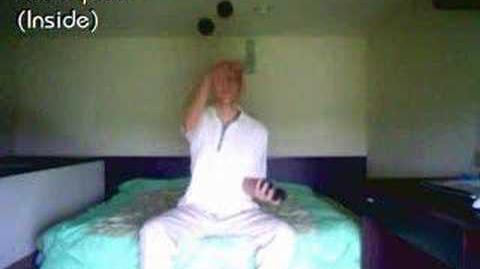(→World records: Updated 9 ball triplex record) Tag: Visual edit |
No edit summary |
||
| Line 4: | Line 4: | ||
===Types of multiplexes=== |
===Types of multiplexes=== |
||
| ⚫ | [[File:Multiplex Terminology|480px|right]] In a [[Stack|stacked]] multiplex, all the objects are thrown to the same hand (either all of them cross to the other hand or none of them cross). In a [[Split|split]] multiplex, some objects are thrown to the right hand and some to the left hand. In a [[Slice|sliced]] multiplex, one of the objects is passed straight into the other hand. |
||
| − | [[File:Multiplex Terminology|480px|right]] |
||
| ⚫ | In a [[Stack|stacked]] multiplex, all the objects are thrown to the same hand (either all of them cross to the other hand or none of them cross). In a [[Split|split]] multiplex, some objects are thrown to the right hand and some to the left hand. In a [[Slice|sliced]] multiplex, one of the objects is passed straight into the other hand. |
||
Multiplex throws are sometimes called [[Duplex|duplexes]], [[Triplex|triplexes]], [[Quadruplex|quadruplexes]], and [[Quintuplex|quintuplexes]], depending on the number of objects that are thrown from one hand. |
Multiplex throws are sometimes called [[Duplex|duplexes]], [[Triplex|triplexes]], [[Quadruplex|quadruplexes]], and [[Quintuplex|quintuplexes]], depending on the number of objects that are thrown from one hand. |
||
| Line 38: | Line 37: | ||
*7 ball triplexes: 3 minutes and 9 seconds by [[Bill Coad]] in 2013 ([http://www.youtube.com/watch?v=bFwlt2OVFXg video]) |
*7 ball triplexes: 3 minutes and 9 seconds by [[Bill Coad]] in 2013 ([http://www.youtube.com/watch?v=bFwlt2OVFXg video]) |
||
*8 ball triplexes: 2 minutes and 29 seconds by [[Bill Coad]] in 2014 ([https://www.youtube.com/watch?v=r8kof6_2pxM video]) |
*8 ball triplexes: 2 minutes and 29 seconds by [[Bill Coad]] in 2014 ([https://www.youtube.com/watch?v=r8kof6_2pxM video]) |
||
| − | *9 ball triplexes: |
+ | *9 ball triplexes: 49 catches by [[Uzu]] in 2014 ([https://www.youtube.com/watch?v=ocXzIK958k8&t=20s video]) |
*7 ring triplexes: 15 catches by [[Tony Pezzo]] in 2012 (''Water on Mars'' [http://www.wespeden.com/?page_id=8 video] at 11:05) |
*7 ring triplexes: 15 catches by [[Tony Pezzo]] in 2012 (''Water on Mars'' [http://www.wespeden.com/?page_id=8 video] at 11:05) |
||
Unverified claims: |
Unverified claims: |
||
| − | *9 ball triplexes: 39 catches by [[Daniel Marden]] in 2007 ([http://web.archive.org/web/20120512144146/http://www.jugglingdb.com/records/record.php?prop=b&number=9 claim]) and [[Matthew Tiffany]] in 2007 ([http://web.archive.org/web/20120512144146/http://www.jugglingdb.com/records/record.php?prop=b&number=9 claim]) |
||
*12 ball triplexes: 12 catches by [[Daniel Marden]] in 2007 ([http://web.archive.org/web/20120512144635/http://www.jugglingdb.com/records/record.php?prop=b&number=12 claim]) and [[Bill Coad]] in 2007 ([http://web.archive.org/web/20120512144635/http://www.jugglingdb.com/records/record.php?prop=b&number=12 claim]) |
*12 ball triplexes: 12 catches by [[Daniel Marden]] in 2007 ([http://web.archive.org/web/20120512144635/http://www.jugglingdb.com/records/record.php?prop=b&number=12 claim]) and [[Bill Coad]] in 2007 ([http://web.archive.org/web/20120512144635/http://www.jugglingdb.com/records/record.php?prop=b&number=12 claim]) |
||
[[Quadruplex]] [[World records|world records]] with publicly available video evidence: |
[[Quadruplex]] [[World records|world records]] with publicly available video evidence: |
||
Revision as of 17:35, 19 January 2015
A multiplex is a throw where two or more objects are thrown from one hand at the same time.

How To Juggle Basic 5 Ball Multiplex Tricks Juggling Tutorial by JugglingTricks
Multiplex tutorial
Types of multiplexes
In a stacked multiplex, all the objects are thrown to the same hand (either all of them cross to the other hand or none of them cross). In a split multiplex, some objects are thrown to the right hand and some to the left hand. In a sliced multiplex, one of the objects is passed straight into the other hand.
Multiplex throws are sometimes called duplexes, triplexes, quadruplexes, and quintuplexes, depending on the number of objects that are thrown from one hand.
A squeeze catch is a reverse multiplex throw - more than one object is caught in one hand at the same time.
World records
Every throw in a multiplex record must involve the same number of objects. For example, a duplex record must consist of only duplexes, with no other kinds of throws in between.
For a record to be listed on this page, the number of objects used must be greater than twice the number of objects involved in each throw. The minimum number of objects allowed is 5 for duplex records, 7 for triplex records, 9 for quadruplex records, and 11 for quintuplex records.
Collecting begins when an object lands in a hand that was already holding the number of objects required for each throw in the pattern. Any object that leaves a hand after collecting has begun is considered to be dropped at the moment it's released, so no subsequent catches will be counted. Every catch of every object is counted while no drops have been made.
Duplex world records with publicly available video evidence:
- 5 ball duplexes: 59 minutes and 14 seconds by Bill Coad in 2013 (video)
- 6 ball duplexes: 37 minutes and 6 seconds by Bill Coad in 2014 (video)
- 8 ball duplexes: 47 seconds by Malte Hamann in 2013 (video)
- 10 ball duplexes: 136 catches by Alexander Koblikov in 2010 (video)
- 12 ball duplexes: 12 catches by Bruce Sarafian in 2009 (video) and Jean-Hicham Rahmoun in 2014 (video)
- 6 club duplexes: 38 catches in 2006 (9-1 Nordic Objects DVD at 8:54)
- 8 club duplexes: 8 catches by Ruslan Guseynov in 2014 (video)
Unverified claims:
- 7 ball duplexes: 60 catches by Alvaro Palominos in 2005 (claim)
- 8 ball duplexes: 2 minutes and 5 seconds by Bruce Sarafian in 2008 (claim)
- 9 ball duplexes: 33 catches by Bruce Sarafian in 2008 (claim)
- 5 club duplexes: 436 catches by Alvaro Palominos in 2004 (claim)
Triplex world records with publicly available video evidence:
- 7 ball triplexes: 3 minutes and 9 seconds by Bill Coad in 2013 (video)
- 8 ball triplexes: 2 minutes and 29 seconds by Bill Coad in 2014 (video)
- 9 ball triplexes: 49 catches by Uzu in 2014 (video)
- 7 ring triplexes: 15 catches by Tony Pezzo in 2012 (Water on Mars video at 11:05)
Unverified claims:
Quadruplex world records with publicly available video evidence:
- 9 ball quadruplexes: 24 catches by Bill Coad in 2014 (video)
- 10 ball quadruplexes: 228 catches by Bill Coad in 2014 (video)
- 9 ring quadruplexes: 36 catches by Tony Pezzo in 2014 (video)
Quintuplex world records with publicly available video evidence:
Siteswap notation for multiplexing
A multiplex throw is written in siteswap notation as two or more numbers in square brackets. 6 balls juggled in a 3 ball cascade (6 ball duplex stacks) would be written as [33].
If the brackets for a multiplex contain a 2, it means one object stays in the hand instead of being thrown at that time, so it may not be an actual multiplex throw. If a multiplex contains a 1, it's a sliced throw. A 0 in multiplex notation can be ignored, so [30] can be simplified to 3.
When working out the average of a multiplex siteswap to determine the number of balls in the pattern, the throws inside the brackets are added together but treated as one throw. So, [43]23 = [4 + 3] + 2 + 3 = 12. 12 / 3 (number of throws) = 4 ball pattern.
A multiplex pattern can be made by combining two non-multiplex siteswaps. The 3 ball siteswap 423 and the 2 ball siteswap 330 combined give the 5 ball siteswap [43][32]3. Since siteswaps can be rotated, 330 can also be read as 033 and 303 and thus, when combined with 423, give the 5 ball siteswaps 4[32][33] and [43]2[33] respectively.

Bruce Sarafian Multiplex Madness VOL II Juggler Incl 10 balls
8 and 10 ball multiplex patterns by Bruce Sarafian
See also
- Multiplex patterns category on Juggle Wiki

